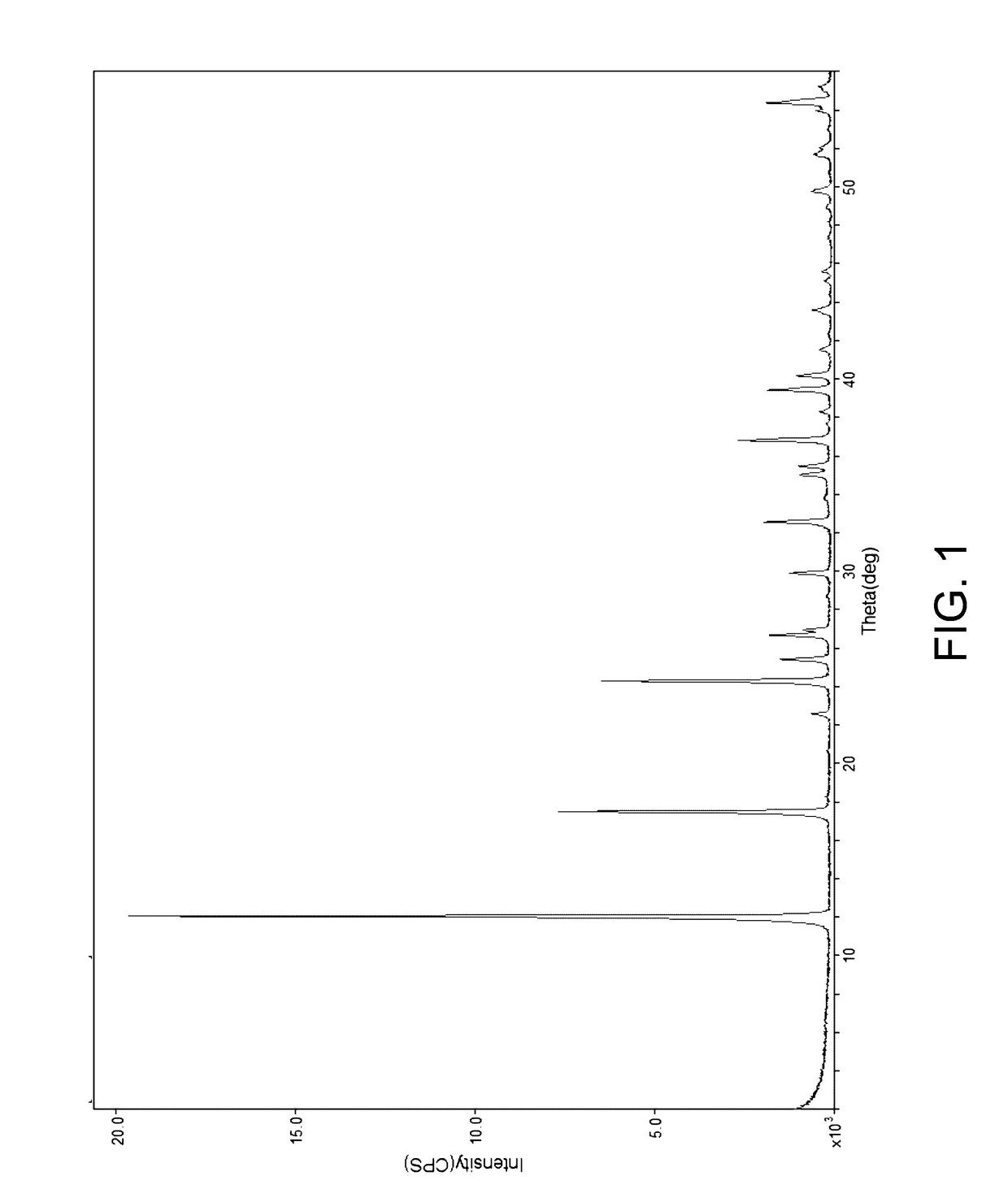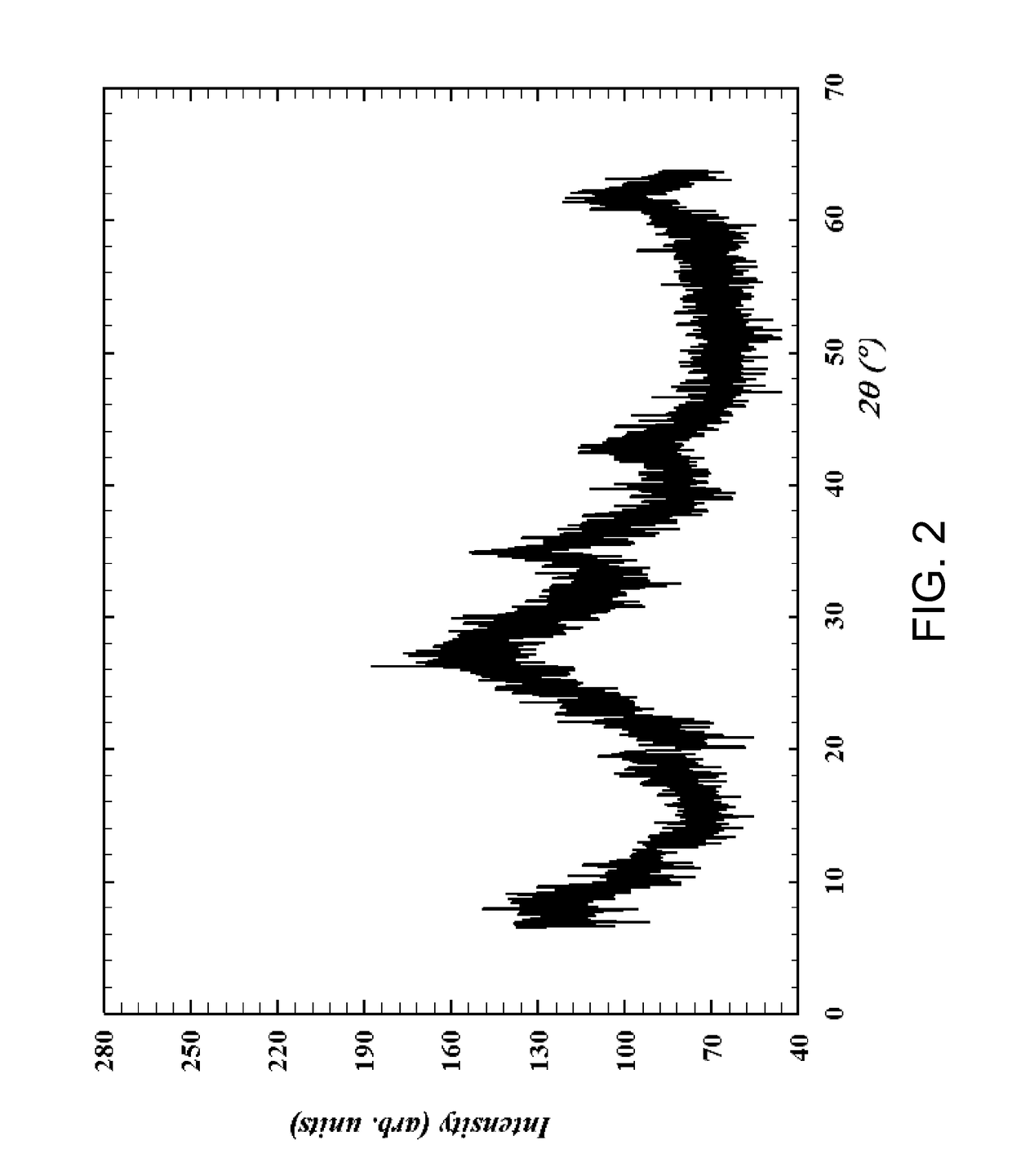Novel mixed metal oxides
a mixed metal oxide and metal oxide technology, applied in the direction of catalyst activation/preparation, metal/metal-oxide/metal-hydroxide catalyst, physical/chemical process catalyst, etc., can solve the problems of accentuated refining problems and raised doubts about the quality of the structural assessment of materials
- Summary
- Abstract
- Description
- Claims
- Application Information
AI Technical Summary
Benefits of technology
Problems solved by technology
Method used
Image
Examples
example 1
[0034]In a ceramic dish, 15.21 g of nickel carbonate (0.15 moles Ni), 13.24 g ammonium heptamolybdate (0.075 moles Mo), and 18.20 g of ammonium metatungstate (0.075 moles of W) were added to 25 ml of concentrated ammonium hydroxide solution. The solution was dried at 150 C for 18 hours with periodic mixing. The dried residue was analyzed by x-ray powder diffraction as described above, and the X-ray powder diffraction pattern is shown in FIG. 1. The dried residue was then calcined in air at a temperature of about 300° C. for 2 hours and then cooled. The calcined material was analyzed by x-ray powder diffraction as described above, and the X-ray powder diffraction pattern of the calcined material is shown in FIG. 2.
example 2
[0035]Solution A. In a 3 liter flask, 35.61 g of nickel carbonate (0.3 moles Ni) and 28.79 g molybdenum trioxide (0.2 moles Mo) were added to 300 ml of water forming a slurry. Solution B. In a 500 ml flask, 13.05 g of ammonium metatungstate (0.05 moles W) was added to 90 ml of a concentrated NH4OH solution. Solution B was added to solution A before being refluxed at about 100° C. During the heating the precipitates dissolved to give a clear deep blue solution prior to the formation of a lime green precipitate. After about 2 hours, a green precipitate was observed suspended in the blue about pH 9 solution. This precipitate was cooled to room temperature, filtered, washed with 90 ml of about 90° C. water and then dried at 100° C. The X-ray powder diffraction of the dried precipitate is shown in FIG. 1. The dried precipitate was then calcined in air at a temperature of 275° C. for 2 hours then cooled. The X-ray powder diffraction of the calcined material is shown in FIG. 2.
example 3
[0036]Solution A. In a 3 liter flask, 35.61 g of nickel carbonate (0.3 moles Ni) and 28.79 g molybdenum trioxide (0.2 moles Mo) were added to 300 ml of water forming a slurry. Solution B. In a 500 ml flask, 26.1 g of ammonium metatungstate (0.1 moles W) was added to 90 ml of a concentrated NH4OH solution. Solution B was added to solution A before being refluxed at about 100° C. During the heating the precipitates dissolved to give a clear deep blue solution prior to the formation of a lime green precipitate. After about 3 hours, a green precipitate was observed suspended in the blue about pH 9 solution. This precipitate was cooled to room temperature, filtered, washed with 90 ml of about 90° C. water and then dried at 100° C. The X-ray powder diffraction of the dried precipitate is shown in FIG. 1. The dried precipitate was then calcined in air at a temperature of about 300° C. for 2 hours and then cooled. The X-ray powder diffraction of the calcined material is shown in FIG. 2.
PUM
| Property | Measurement | Unit |
|---|---|---|
| Temperature | aaaaa | aaaaa |
| Temperature | aaaaa | aaaaa |
| Temperature | aaaaa | aaaaa |
Abstract
Description
Claims
Application Information
 Login to View More
Login to View More - R&D
- Intellectual Property
- Life Sciences
- Materials
- Tech Scout
- Unparalleled Data Quality
- Higher Quality Content
- 60% Fewer Hallucinations
Browse by: Latest US Patents, China's latest patents, Technical Efficacy Thesaurus, Application Domain, Technology Topic, Popular Technical Reports.
© 2025 PatSnap. All rights reserved.Legal|Privacy policy|Modern Slavery Act Transparency Statement|Sitemap|About US| Contact US: help@patsnap.com


